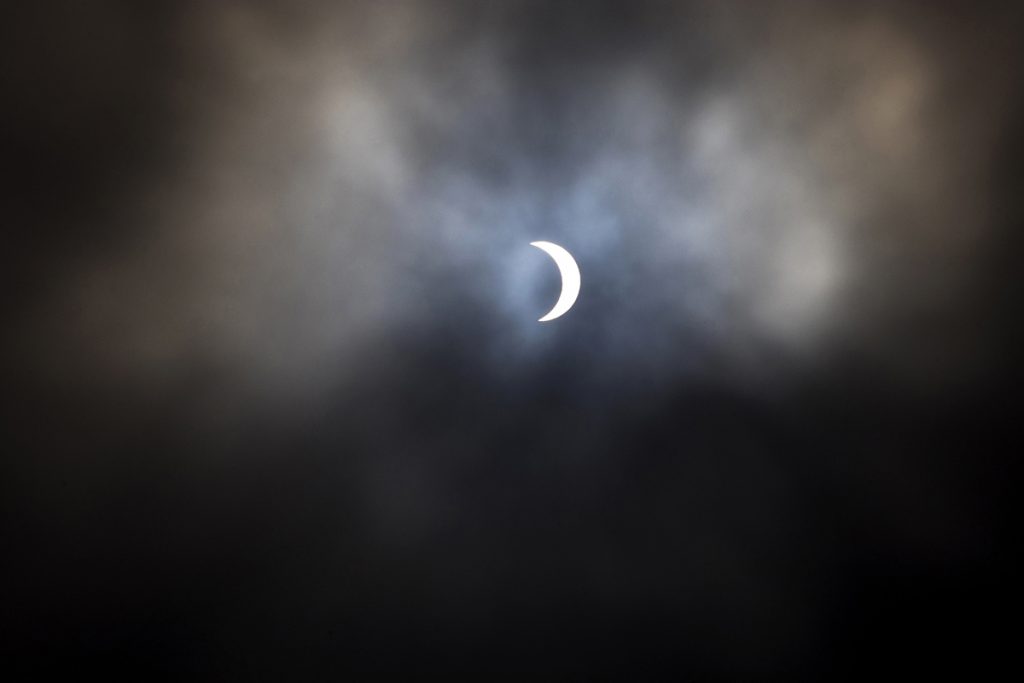As students and faculty looked toward the sky this morning with every intention of seeing the first solar eclipse of the century, they were met with a different view– or lack thereof.
The department of physics and astronomy gathered in the Quad today from 9 a.m. to 11:30 a.m. to see the solar eclipse, but the fog hovering above San Francisco did not allow for much visibility.
However, the fog rolling in still wasn’t enough to dampen students’ and faculty’s excitement.
“The cool thing about this solar eclipse is that its axis is aligned such that you won’t see anything of the sun,” said Priyadarshini Gokuldass, a 22-year-old graduate student studying astronomy at SF State.
The set up in the Quad included items such as a small-sized portable telescope, a model of the sun, moon and Earth and welding masks to protect viewers’ eyes from being damaged when staring directly at the eclipse.
The astronomy and physics department also set up a television in the J. Paul Leonard Library next to Peet’s Coffee to follow NASA’s satellite coverage of the moon and the sun with no obstructions.
“It’s a shame we won’t get to see it here,” said Peter Verdone, a staff member in the department of physics and astronomy. “Still, we can watch it up close on the monitor in the library.”
Unlike many of the solar eclipses that occur every 18 months, this particular eclipse is traveling all across the United States from the West to East coast.
“It’s called totality when the moon completely blocks the sun,” said Kathryn Kooistra, a 24-year-old astronomy graduate student. “This is the first time in almost 100 years that the sun will follow the path of totality across the United States.”
According to the flyer that the department passed out at the event, the coverage of the moon passing over the sun in California was up to 75 percent, whereas in Oregon it was 100 percent.
Even though San Francisco’s weather hindered students’ viewing of the total solar eclipse, the next one, according to scientists, will be on April 8, 2024 in which San Francisco will be able to view a partial eclipse.





